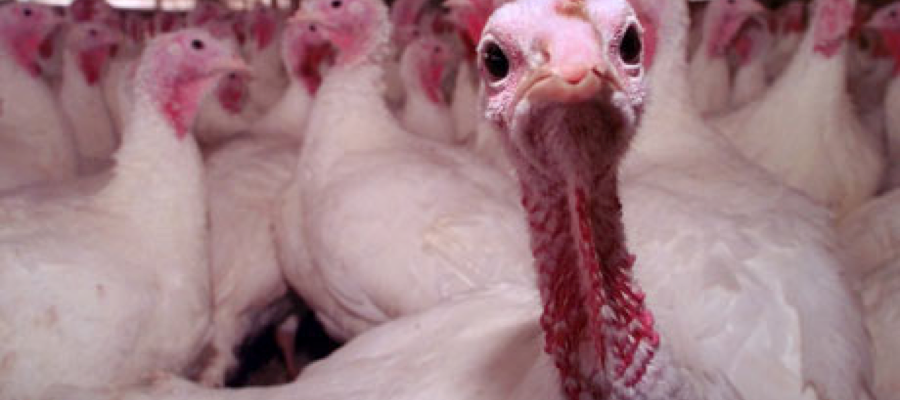|
By Alexandra DeCandia
Popcorn and Caramel breathed easily this Thanksgiving. The two lucky turkeys chosen for the annual Presidential pardon observed the holiday at the White House both feathered and free from the indignities of stuffing. However, as the winner and runner-up of a turkey equivalent to the Hunger Games (as Obama quipped), Popcorn and Caramel are fortunate to share such an unusual fate. Every year, Americans consume an estimated 46 million turkeys on the Thanksgiving holiday – almost one-fifth of the annual U.S. production of 254 million birds. Such astronomical, gravy-soaked casualties reveal more than an American zeal for turkey. It’s become a celebratory obsession – a staple during those times of family, warmth, and togetherness. But how much do Americans really know about the coveted drumsticks and over-sized breasts they consume each year? A short trip through the wormholes of the Internet reveals more than just basting techniques and optimal cooking times. The modern North American turkey (Meleagris gallopavo) descended from a long line of feathered bipeds that originated in the Early Miocene (c. 23 million years ago). Belonging to the order of Galliformes, they are most closely related to grouse, quail, pheasants, partridges, and chickens, but maintain the largest body size. Equipped with elaborate plumage (capable of shining red, purple, green, and gold in males), a varied repertoire of gobbles, and a distinctly nubby red head (complete with the ever attractive wattle, snood, and caruncles), wild turkeys aren’t exactly the subtlest of creatures. Therefore, it was not long before man, that great tinker of life, sought its domestication. Archaeological evidence suggests that turkeys were first domesticated by the Mesoamerican indigenes roughly 2,000 years ago. Likewise a staple for native peoples in the North, wild and newly domesticated turkeys provided ample eggs, meat, and decorative feathers for centuries. However, with European colonization of the Americas came the export and ultimate industrialization of the turkey industry. More and more, these intense selective pressures led domesticated turkeys to display phenotypes altered from their wild cousins. They doubled in size, developed white feathers, and grew such large breast muscles that they lost the ability of flight (and even that of natural copulation). Perhaps their greatest divergence, though, was one of population size. While the domesticated turkey population exploded to meet the ever-growing demand of a burgeoning nation, that of wild turkeys greatly diminished due to gross overhunting and rampant logging that coupled America’s economic expansion. By the early 1900’s, wild turkey populations reached an all-time low of 30,000 individuals. Restricted to isolated pockets of their ancestral range and almost entirely extirpated from its extremes, the species seemed en route to extinction. However, through a combination of strict hunting regulations, frequent individual relocations, and newly acquired funds from the 1937 Pittman-Robertson Act (which reallocated money from firearm taxes to wildlife conservation), wild turkey populations were able to rebound at an exponential rate. Today, more than 7 million wild turkeys join the 254 million domesticated turkeys currently inhabiting the North American continent. Their numbers are strong, their range expanding, and their meat so delicious when paired with good company and the perfect stuffing. Even Ben Franklin realized the significance of such a distinctly American bird. As he penned in a letter to his daughter (leading to the apocryphal myth of his desire for a Galliform national bird): “The turkey is…a respectable bird, and withal a true original Native of America…He is besides, though a little vain and silly, a Bird of Courage.” So be mindful and proud of your turkey next Thanksgiving. Remember the awkward majesty of its appearance, the struggle of its existence, and the tradition of its place at the center of American life and celebration. Then, once all due respect has been paid, gobble it up with the greatest care and ample amounts of gravy.
0 Comments
Leave a Reply. |
Categories
All
Archives
April 2024
|

